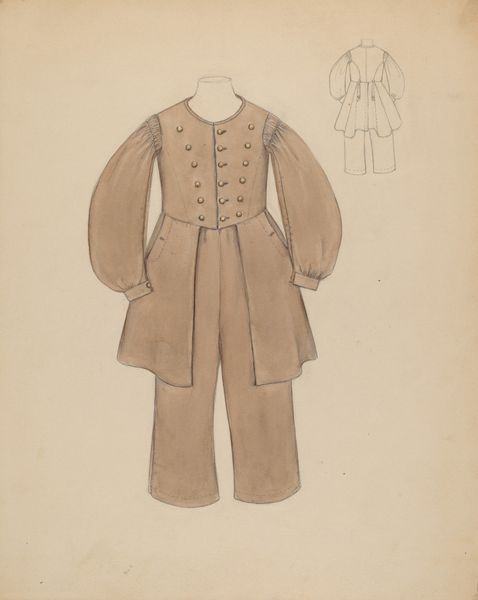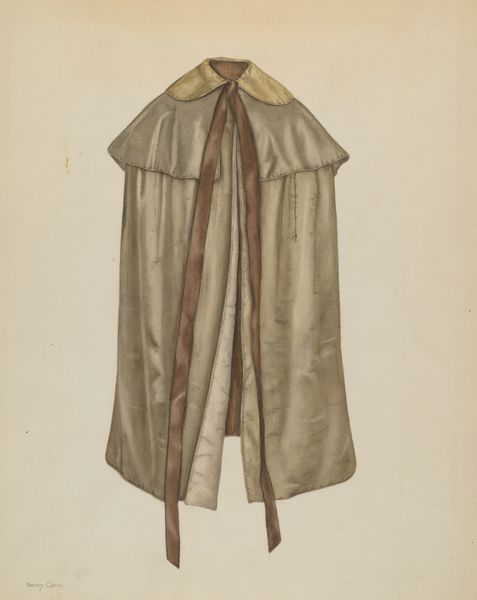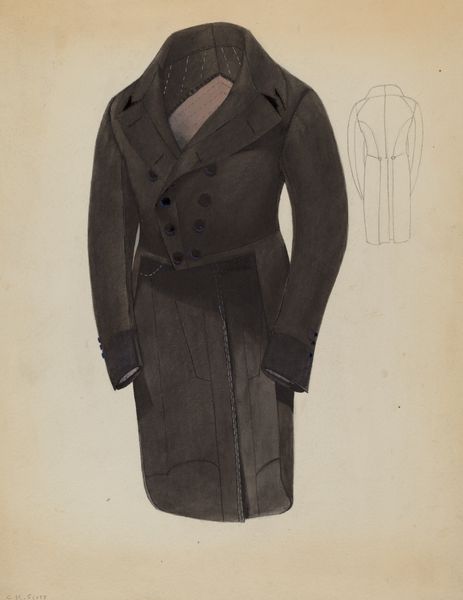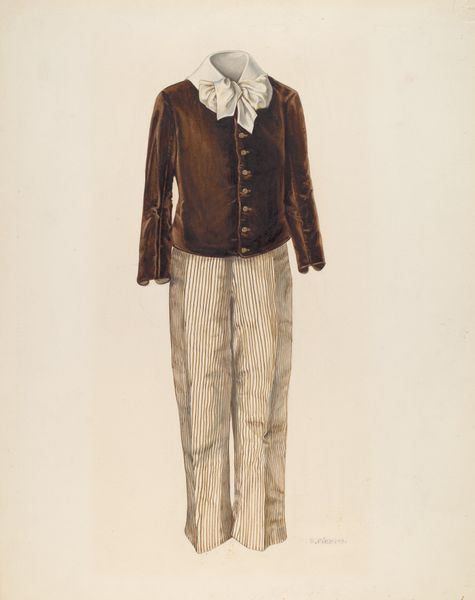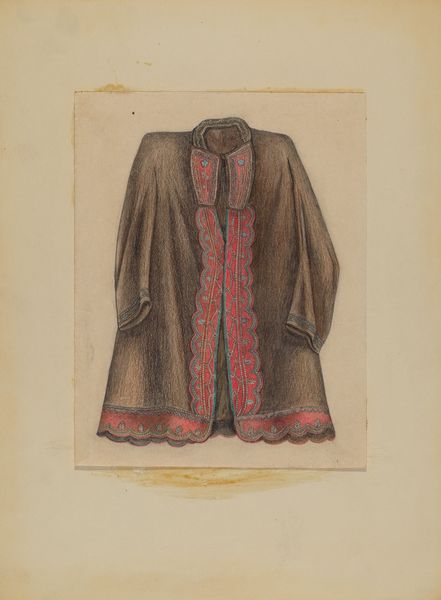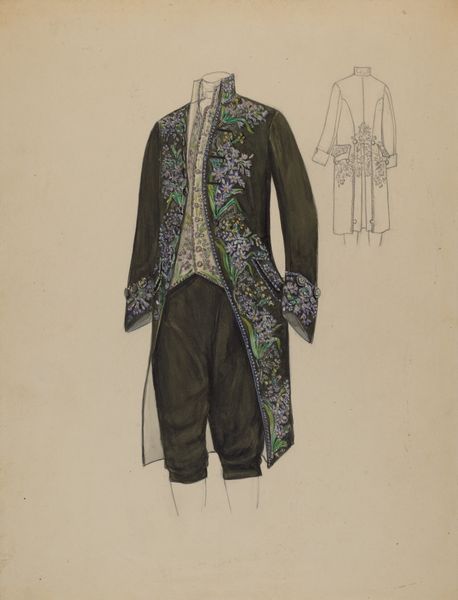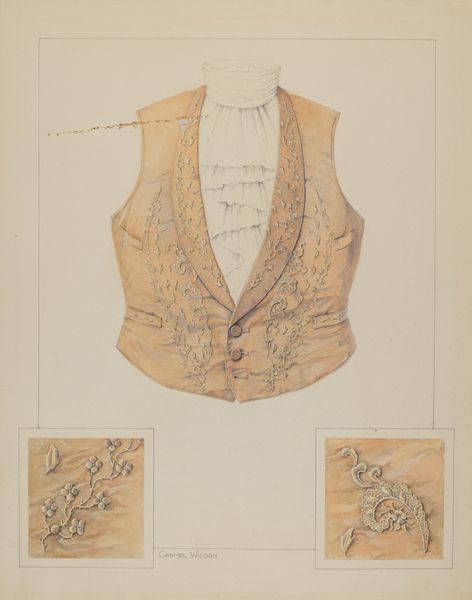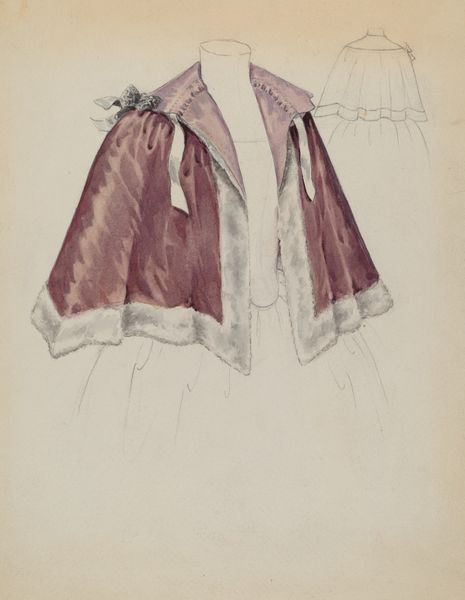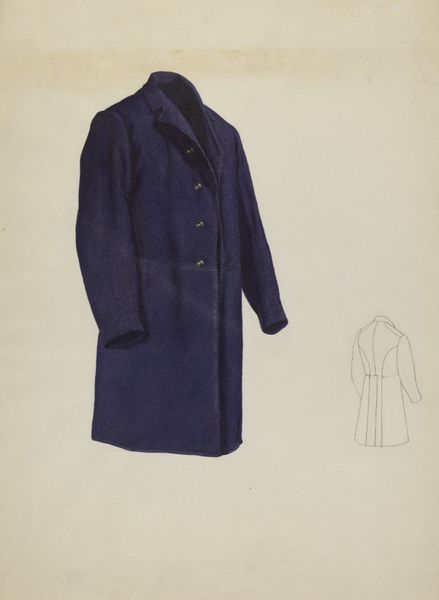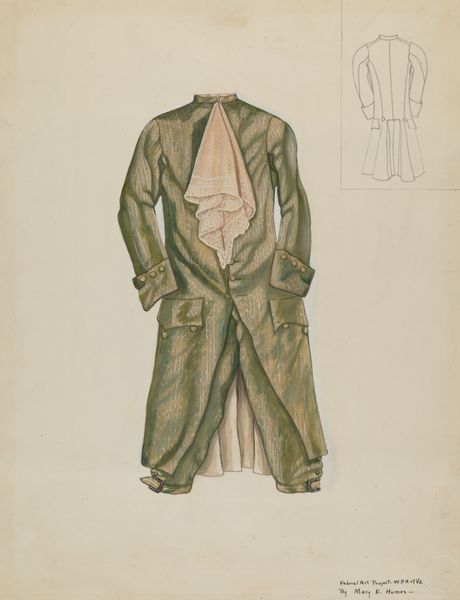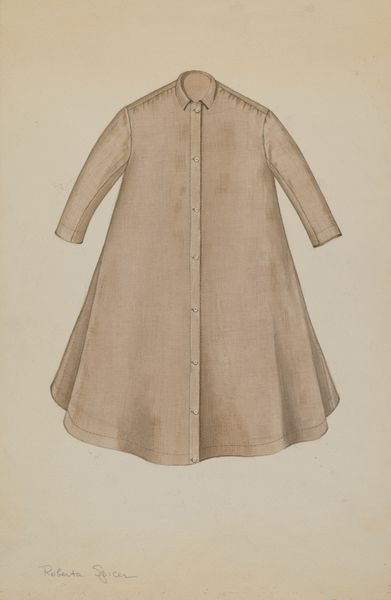
drawing, watercolor
#
portrait
#
drawing
#
pencil sketch
#
watercolor
#
pencil drawing
#
watercolour illustration
#
academic-art
#
watercolor
Dimensions: overall: 29.8 x 22.8 cm (11 3/4 x 9 in.)
Copyright: National Gallery of Art: CC0 1.0
Curator: Let’s discuss Melita Hofmann’s “Man’s Suit,” circa 1936, executed in watercolor and pencil. My initial impression is a muted, perhaps even spectral quality—the almost-there presence of historical fashion. Editor: It gives off the feeling of restraint and formality; you could see the echoes of 18th century opulence, yet rendered with a clear lack of frill or grandeur. It seems more focused on structure and process than showiness. I'd be interested to hear about Hofmann's specific focus on depicting this sartorial subject? Curator: Considering the date, the mid-1930s, and knowing Hofmann’s background, I believe this likely relates to costume design, probably theater or perhaps even early film productions in interwar Europe. This image serves as both a design and a document—a record of very particular material conditions. Editor: Precisely. Looking at the clear delineation of textures, I am led to thinking about not only her choices as a designer, but about labor conditions to fabricate textiles at the time and where that particular fabric, most likely wool or worsted, comes from; maybe local or part of trade agreements, so its existence itself reflects political decisions. We must consider not just its aesthetic, but also its social function. Curator: Yes, and look at the visible pencil sketch beneath the watercolor—the bones of the garment laid bare. It pulls back the curtain on the making-of, showing not just the final presentation, but the labour and choices involved. It’s not romanticizing a period of excess, it is documenting something very concrete. Editor: Absolutely, I feel as though these artistic and material aspects offer a lens to dissect fashion and class through gender studies; an active questioning of how clothing establishes the performance of gendered roles and social rank in society during this volatile interwar era. We have a visual code to investigate broader political power constructs and narratives, not simply beauty. Curator: What this highlights for me is that art is always labor, material and inextricably bound to its context. And by observing that craft closely, by observing the material choices, by decoding what is visible but might easily go unseen, we start to get a real picture of an era. Editor: Exactly, these are very tangible expressions, encoded statements made visible using threads, dye and artistic methods reflecting that very era itself, a reminder to dissect our past so we can weave new critical paths today.
Comments
No comments
Be the first to comment and join the conversation on the ultimate creative platform.
